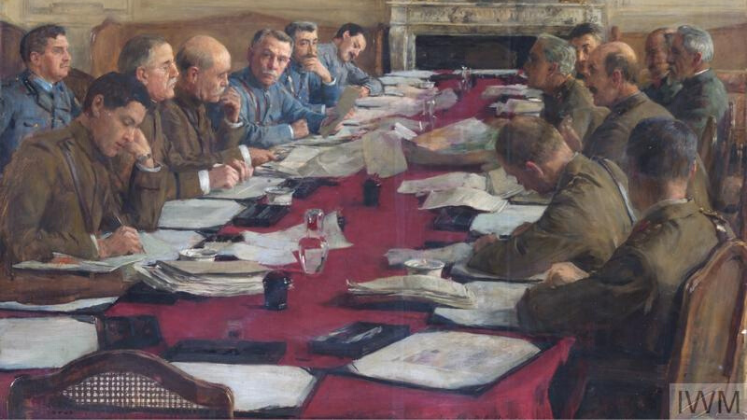Structural and institutionalised racism is still present in Britain and Europe, a factor that social work education and training has been slow to acknowledge. In this recent book, Michael Lavalette and Laura Penketh aim to show that racism towards Britain’s ethnic minority groups has undergone a process of change. The authors examine contemporary anti-racism and racism towards Eastern European migrants, Roma people and asylum seekers and the realities of racism and their implications for current practice. Harriet Deacon finds that the volume provides a useful collection of articles that contribute to what will hopefully be a growing debate within British society about the relationship between racism and social marginalisation, and how to address both of these problems.
 Race, Racism and Social Work. Michael Lavalette and Laura Penketh (eds.). Policy Press. December 2013.
Race, Racism and Social Work. Michael Lavalette and Laura Penketh (eds.). Policy Press. December 2013.
In Britain today, black and minority ethnic (BME) communities still have disproportionately low access to employment, health, education and welfare provision. Britain now has the widest race gap in police ‘stop and search’ internationally – worse than it had in the 1980s (p.6). The Home Secretary has now pledged to address this, but many will find that hers is the latest commitment in a long line of broken promises.
The aim of Race, Racism and Social Work is to ‘re-open debates about issues of ‘race’ and racism in modern Britain’. Social workers are well aware of the impact of social marginalisation on people caught in the shrinking patchwork of social welfare provision, and the authors here argue that social workers should engage in more critical reflection on the impact of shifting patterns of racism and discrimination in society and their role in addressing these problems. This volume of collected essays will be of specific value to social work students, as is its intention, but it may also attract a general readership interested in understanding the changing face of racism in Britain.
The authors wear their ideological hearts on their sleeves, decrying the ‘neo-liberal’ agenda of ‘multiculturalism’ and putting forward the case for social work practice in the UK to be ‘fully committed to the principles of anti-racism’ (p.16). The authors define anti-racist social work practice as one that ‘emphasises the importance of structural and institutional disadvantage’ in understanding BME experiences, and ‘highlights the need to consider the disadvantage and racism that they encounter’ (p.x). Urh, in the chapter on anti-Roma racism in Europe, suggests that social workers could in fact become ‘cultural advocates’, speaking out against discrimination and acting as mediators between different cultural groups (p.128). Levine, in the chapter on anti-Semitism, calls on social workers to become activists, working collectively to champion human rights (p.109). Moran and Gillett (Chapter 12) document a case in which a social worker challenged an unfair Merton-compliant age assessment of a disabled boy who was an asylum-seeker in the UK.
However, as Penketh says in her chapter on social work with Muslim women, the world is ‘shifting, complex and messy’: social workers should avoid imposing ‘western’ values and judgements onto service users from different cultural backgrounds (p.151). Social workers often find themselves in an ethically difficult position as employees of the state who have a duty of care to service users. Lavalette argues in his chapter on ‘Institutionalised Islamophobia and the ‘Prevent’ agenda’ that social workers need to be aware of the risk that they become ‘agents of surveillance and control’ under counter-terrorism programs (p.188). Torn between their duty of care to undocumented immigrants in the UK, and immigration policy which prohibited local authorities from providing any support to such families, social workers in Bolton organised a concerted campaign of non-compliance (p.219).

As a background to the debates in the profession, a few of the chapters in the book explore the chequered history of anti-racist approaches in social work: ‘Rethinking anti-racist social work’ (Singh, Chapter 1), ‘Black professionals and the anti-racist movement’ (Williams, Chapter 3), ‘Same, same but different’ (Harrison and Burke, Chapter 4), and ‘In defence of multiculturalism?’ (Jenkins, Chapter 7). In the wake of the Brixton riots in the 1980s, competence in anti-racist practice became a requirement in the British social work curriculum and the social work profession began to employ more people from BME backgrounds (p.10). The ensuing debate about how to put anti-racist ideology into social work practice was initially very productive, but anti-racism was criticised for being too ‘politically correct’, too ideologically driven, and too formulaic, and for neglecting the interrelationships between racism, gender and class discrimination (p.20). By the 1990s, the Diploma in Social Work dropped its formal commitment to anti-racism and replaced it with a requirement for ‘cultural competence’ (p.76).
The social work curriculum is now dominated by a ‘multicultural’ discourse, individualising service users’ problems, ascribing them to cultural differences rather than racism, and focusing on individual empowerment as a solution to them (p.26). Harrison and Burke argue that in challenging this approach, anti-racist social work needs to reframe itself as part of a broader ‘anti-oppressive practice’, exploring the connectedness of racism to other forms of oppression in society. Williams argues that while BME social workers are often viewed as the vanguard of anti-racist social work, there is a lack of understanding of the specific personal and professional challenges they face in remobilising this effort, especially as the broader context of social work practice has been depoliticised. Recruited in increasing numbers within social work since the 1980s, BME social workers remain underrepresented in more powerful positions in the profession, including academia (p.62).
The main point of the book is that teasing out the various ideological and structural drivers of racism and discrimination is particularly important today as an expanding range of very diverse communities experience targeted discrimination and disadvantage. The book illustrates this diversity well in chapters on anti-Semitism (Levine, Chapter 5), xeno-racism (Fekete, Chapter 2), Islamophobia (Chapters 2, 8, 9 and 10), discrimination against migrant care workers and asylum-seekers (Chapters 11, 12 and 13) in Britain, and anti-Roma racism in Europe (Urh, Chapter 6). These chapters offer historical and contemporary analyses of racial stereotyping, discrimination and human rights violations. In some cases public policy and the provision of public services echo the forms of racism in mainstream society. In 2001, for example, a Roma woman from Slovakia reported a racist attack in which she and her 10-year old daughter were doused with petrol and wounded in her face and back. She was told by Polish police that she had made the story up (p.125). Muslims in Britain experienced a wide range of physical and verbal attacks after 9/11 and the 2005 bombings in London and are now specifically targeted for surveillance by the state, sometimes through social work programs aimed at integrating Muslim communities into ‘British values’. This approach underplays some of the structural factors, including unemployment, poor health conditions and inadequate housing that contributed to the radicalisation of some Muslims (p.173-5).
The authors of this collected volume come from similar political perspectives, looking back to the anti-racist agenda of social work in the 1980s to provide theoretical and political inspiration for dealing with new challenges. In doing so, the authors extend the concept of racism to include a number of different ways of stereotyping and discriminating against people (for example on the basis of religion, culture or class). Older forms of racism are indeed often simply dressed in new ‘cultural’ clothes, but this kind of ‘conceptual inflation’ has some theoretical disadvantages (see Robert Miles’ excellent book, Racism). Nevertheless, the volume provides a useful collection of articles that can contribute to what will hopefully be a growing debate within British society about the relationship between racism and social marginalisation, and how to address both of these problems.
——————————————–
Harriet Deacon is a historian from South Africa who has worked extensively on the history of racism and discrimination in medical institutions and in the field of HIV and AIDS. Her publications include H.J. Deacon, I. Stephney and S. Prosalendis, HIV/AIDS stigma: a theoretical and methodological review, (Cape Town: Human Sciences Research Council, 2005). Read more reviews by Harriet.







